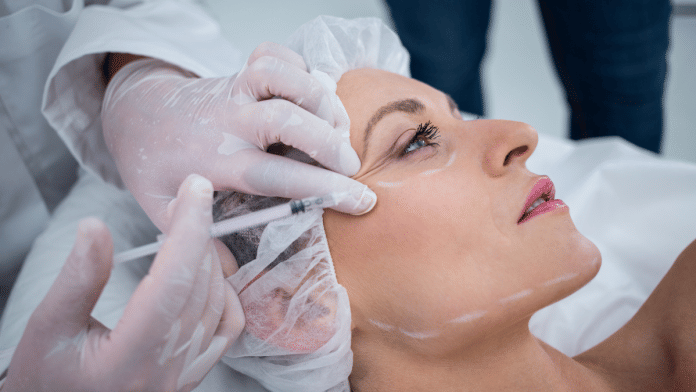Ageing is a fact of life. Sure, we can just kick back and let gravity take over. But, for those of you who have been toying with the idea of a cosmetic treatment that will take a few years off your face—this article is for you.
If you scroll through any social media today, you’re going to find 50 different treatments that promise younger skin without surgery.
While many of these are viable options, always remember that the most important aspect is to be treated by a certified and medically legitimate dermatologist.
What is a non-surgical facelift?
Yes, a non-surgical facelift is possible. They use mildly invasive techniques such as lasers, fillers, injectables, etc.
It’s a way to refresh, tighten, and plump your skin without the drama of an operating room.
So, what’s the difference between a non-surgical and surgical facelift?
- Surgical: Medically referred to as rhytidectomy, this facelift involves making actual cuts to your skin to tighten it up. It’s a slightly more dramatic, more permanent method that will most definitely involve anaesthesia, post-surgery stitches and a recovery period that gives you enough time to watch Netflix for weeks.
- Non-surgical: This type of facelift involves no major incisions on your face. There’s no general anaesthesia involved either. You can walk out looking (and feeling) like your younger self in a few hours. You might be a little redder than you’re used to, but that fades in a few hours
But there’s a catch—the results are temporary, sort of like a subscription-based younger-looking skin.
But this temporary nature can be an advantage for those who are unsure about anti-ageing procedures. You have the assurance that your face will go back to square one. Plus, it’s cheaper than surgery.
Also read: Exosomes are the latest buzzword in hair loss treatments. Do they work for everyone?
Who can get a non-surgical facelift?
Here’s who can get these procedures done:
- People who are starting show early signs of ageing; fine lines, slight skin sagging, lost volume in the cheeks, etc.
- If you prefer to have an easier transition back into your routine, and almost zero post-procedural downtime
- If you’re afraid of surgery.
But more importantly, here’s a list of people who aren’t good candidates for this treatment.
- People with deep wrinkles or skin that’s extremely loose might not see any difference with non-surgical treatments.
- Anyone with active acne, eczema, or skin conditions must consult with their trusted dermatologist before any procedure.
- Anyone expecting permanent results.
Different types of non-surgical facelifts
The world of skincare has no dearth of options for non-surgical interventions. Here are the popular ones.
Injectables
- Botox: This one isn’t new. Botox essentially freezes your muscle areas to smooth out wrinkles, which means you can say goodbye to frown lines and crow’s feet. Its effects usually last for about three to six months.
- Dermal fillers: These fillers, such as hyaluronic acid, make your cheeks and lips look plump and fill out deep lines. The effects of fillers usually last for six months to two years.
- Fat-based injections: This particular technique takes fat from one part of your body, such as your thighs, and moves it to your face. The effects of fat-based injections will last longer than fillers.
Injectables give you instant results, with no downtime.
Laser treatments
These procedures use light beams to zap away old skin and boost collagen. Any mild sagging skin is taken care of and tightened, thus improving texture. It even helps with sun damage.
Laser treatment also has minimal downtime, and it gives you a post-vacation glow even if you haven’t gone anywhere.
Threadlift
This is quite an ingenious technique that uses tiny dissolvable threads, which are inserted under your skin to lift and tighten it. The results will last you from four months to over a year, depending on your skin. They also stimulate collagen for long-term benefits. The only post-treatment care is to avoid tugging at your face for a few days.
Microneedling
Tiny needles are used to create micro-injuries to boost collagen production within your skin. This technique helps with wrinkles, pores, and skin texture. While this takes a few sittings to see effects, the results are worth it.
While all of these are safe and effective treatments, I would always suggest that you get a proper assessment done by your trusted dermatologist before setting any expectations. Ageing is inevitable, and with both surgical and non-surgical methods, there will be a cap on how much younger you can look.
Dr Deepali Bhardwaj is a Consultant Dermatologist, Max Hospital, Saket. She is also an anti-allergy specialist, laser surgeon and internationally trained aesthetician. She tweets @dermatdoc. Views are personal.
(Edited by Theres Sudeep)






